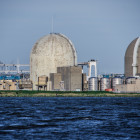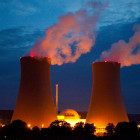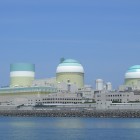Advantages of Nuclear Energy
The majority of today’s social orders are greatly subject to energy and electricity. There are two essential energy sources: non-renewable fossil powers and renewable. Environmental change concerns, high oil costs, trepidation of deficiencies of fossil fills, huge appropriations for fossil energizes and expanding government support towards clean energy drive renewable energy enactment and motivators. In this piece of the paper, the stress was put on nuclear energy and fossil fills in light of the fact that the two were pertinent for the examination. Renewable sources originate from regular assets which are anything but difficult to recharge, for example, sun, wind, and water, geothermal warmth, and biomass. They are economical which implies that the needs of the present populace are fulfilled without imperiling needs’ fulfillment without bounds society. Renewable energy is encountering a kept on growing in all end-use sectors and that’s what does nuclear energy do.
Fossil fuel sources are coal, lignite, petroleum or gas, which is the remaining, part of the decay of plants and creatures millions years back. The most critical issue with these energy sources is the greenhouse gas and other poison, as e.g. dust, emission. By and large paying little mind to the energy sources, the sector is portrayed by huge variances in energy costs, developing interest for energy from creating nations, taking a stab at proficiency both underway and use, major framework disappointments, and rising pollution of the environment. All operations from mining uranium mineral to delivering fuel are carried out at a low level of nuclear radiation. The operations of spent fuel from fuel release from reactor center to radioactive waste transfer in landfills are directed at a high nuclear radiation level. On account of high-dynamic waste and spent fuel profound capacity is visualized beyond the question of what does nuclear energy do?
On the planet there are constructed profound stores for this reason. Basically all exercises connected to creation or utilization of isotopes is joined by the arrangement of radioactive nuclear waste. Because of the particular nature, radioactive waste obliges unique taking care of. The major distinction between them, barring the sort, is the limit and development time. Typically, higher limit implies longer building period. Different qualities are comparable, both are anticipated to work sixty years, use uranium as fuel and have the same power conformity rate. A past study underlines that its nuclear reactors conform to the most noteworthy security prerequisites and are environmentally friendly as they minimize fuel utilization and also waste creation and in this way working expenses. Predevelopment expenses are the use past to the building stage. They incorporate, for instance the Research and development of the site, setting up fundamental administrative bodies or streamlining the law. They are pivotal as they lay the establishments for any speculation.
These days, the fundamental wellspring of fluid and strong waste is the reactor and the assembling plant of radioactive isotopes. Other waste originates from situated all through the nation doctor’s facilities, centers and diverse foundations utilizing isotopic methods. There is additionally no dust or mercury creation as contrary to coal electricity generation. From the point of view of the full nuclear fuel lifecycle, a little measure of pollution is delivered by implication while mining, transporting or processing uranium and amid the development stage. Taking into account examines, the environmental benefits of nuclear power were decided to be assessed as a decrease of CO2 emission with respect to the counter-accurate instance of a coal-fired power plant.



